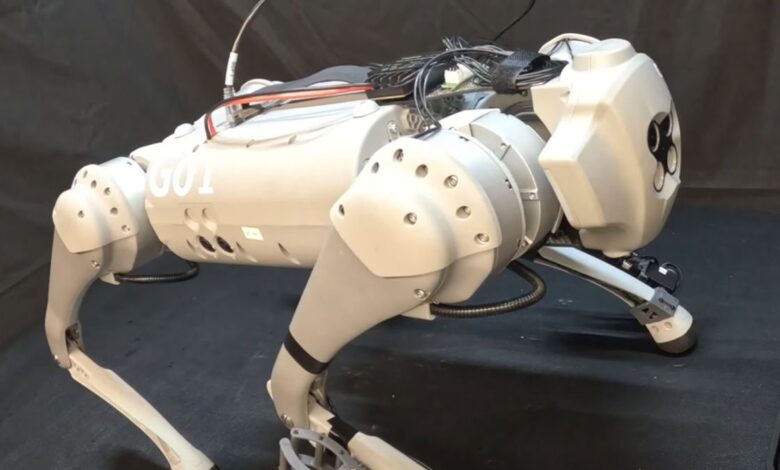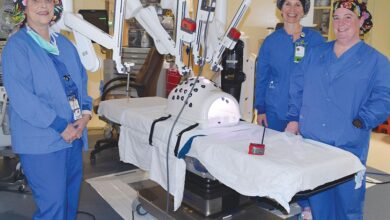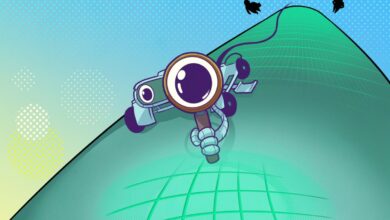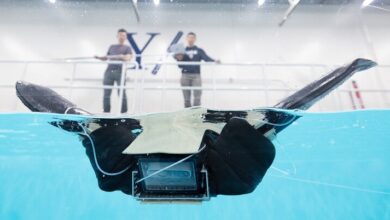Meet LocoMan, the quirky robot dog that can stand up on its hind legs like a meerkat and play with objects

Scientists have developed a quadrupedal robot that can use its two front legs to pick up and handle objects while walking on its hind ones.
Quadrupedal robots usually take the form of robot dogs, including Boston Dynamics’ Spot. They can walk over challenging terrain at speed and usually have low centers of gravity. Most object-manipulating quadrupeds have two additional arms that can pick up and carry objects — meaning they have six “limbs” in total.
But the “LocoMan,” robot is unique because it can transition from its all-fours stance to a standing pose and use its two front legs to manipulate objects. The scientists outlined how the robot worked in a study posted March 27 to the arXiv preprint server.
“In this paper, we present LocoMan, a novel approach that enhances the manipulation dexterity of quadrupedal robots through the integration of designed lightweight loco-manipulators, expanding their operational workspace and enabling precise control over complex 6D manipulation tasks,” the scientists said in the paper.
The LocoMotion
The design combines the mobility of a quadruped with the functionality of “manipulators” which, in this case, refers to hand-like parts on the robot that can control or handle an object. The key here is that the ability to handle objects has been developed without compromising the agility of LocoMan.
However, its multifunctional legs also demonstrated versatility across challenging environments, such as confined spaces and rocky terrain. with the robot showcasing accurate and stable movements during tasks that required “intricate dual-arm coordination.” This sets LocoMan apart from other quadrupedal robots.
Related: Watch a ‘robot dog’ scramble through a basic parkour course with the help of AI
Its design took inspiration from the “anatomy of human arms,” the researchers said in their paper, with custom-made loco-manipulators that make use of existing joints added to the calf area of the front legs.
These leg joints are similar to the elbow and shoulder joints in a human while the added joints share similarities with human wrists. They incorporated four compact actuators (the components that control the movement) which provide position, velocity and torque feedback. To make the loco-manipulators more compact, the team designed the gripper as two pairs of rotating jaws with gear engagement, enabling symmetric opening and closing of the gripper with a single motor.
To integrate the loco-manipulator seamlessly with the existing structure of the four-legged robot, the joints needed to align and allow for movement and gripping actions without either of these capabilities hampering the other.
The researchers evaluated LocoMan with real-world experiments, such as opening doors, pushing plugs into electrical sockets and picking up objects in tight spaces. The team noted in the study that the robot completed all tasks and showed “remarkable dexterity.”
“Our research offers a different perspective of intelligent robots. Rather than replicating humans with a similar morphology, we would like to provide a complementary robot that can do what humans may not want to do,” said Ding Zhao, an associate professor of mechanical engineering at Cornell University, in a statement. “LocoMan makes it possible for quadrupedal robots to perform complex manipulation tasks in narrow spaces.”
The scientists now want to put LocoMan to the test in more challenging real-world settings and situations. They also plan to add computer vision and machine learning algorithms to the robot in their research in the future.



